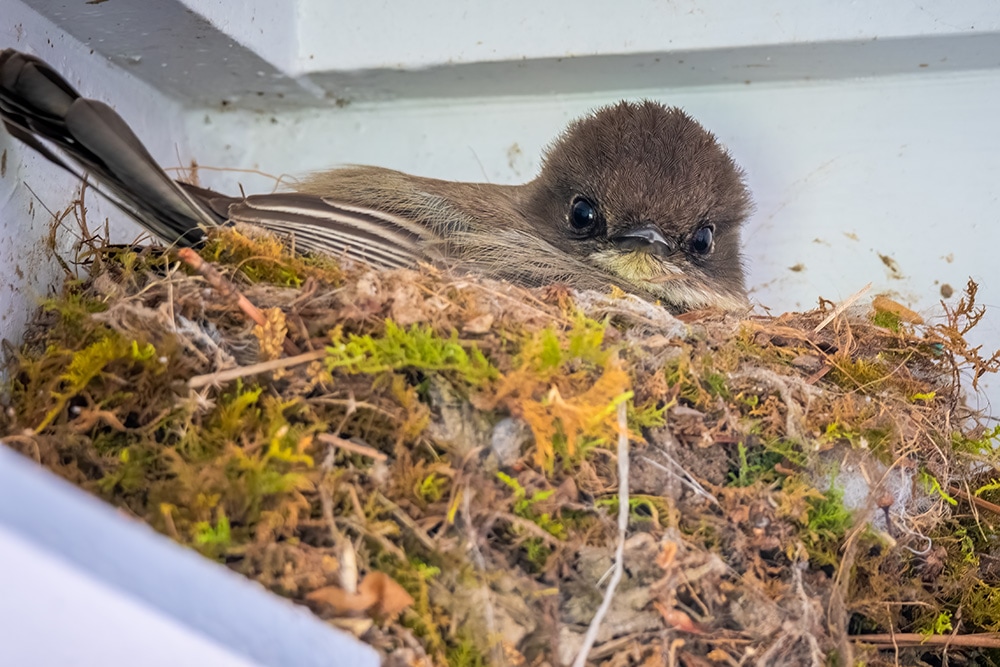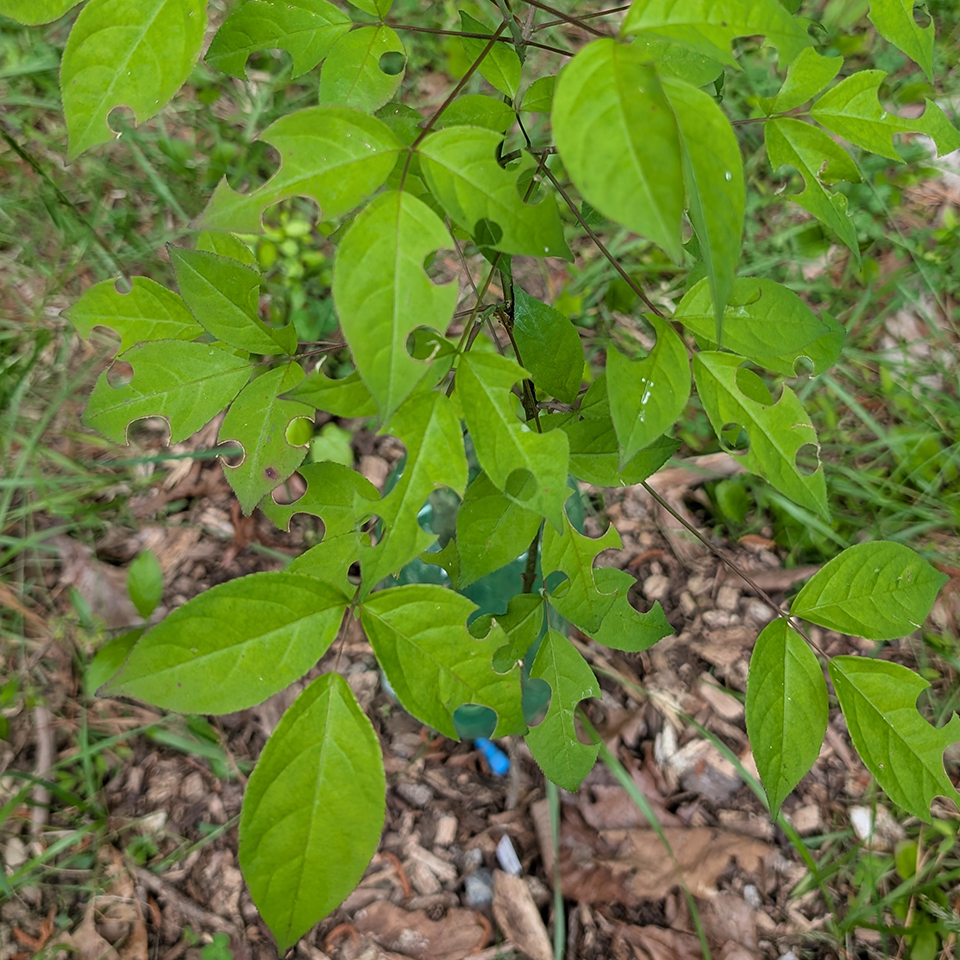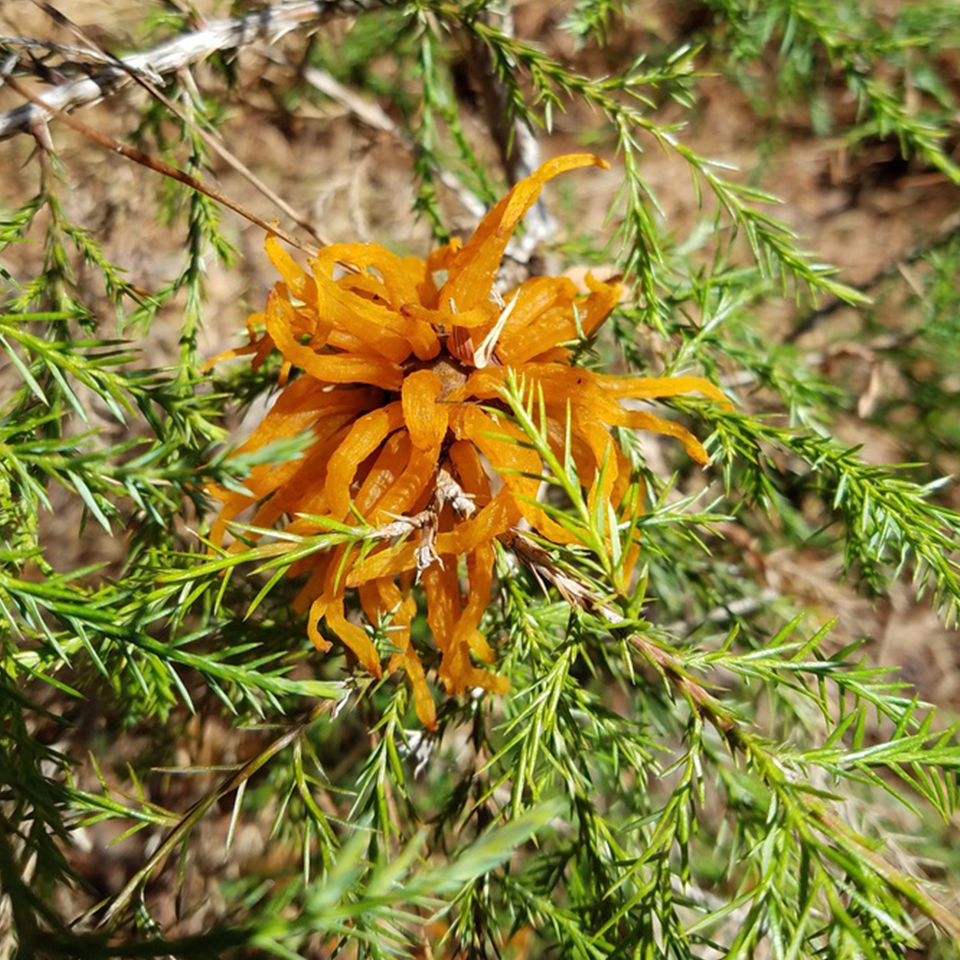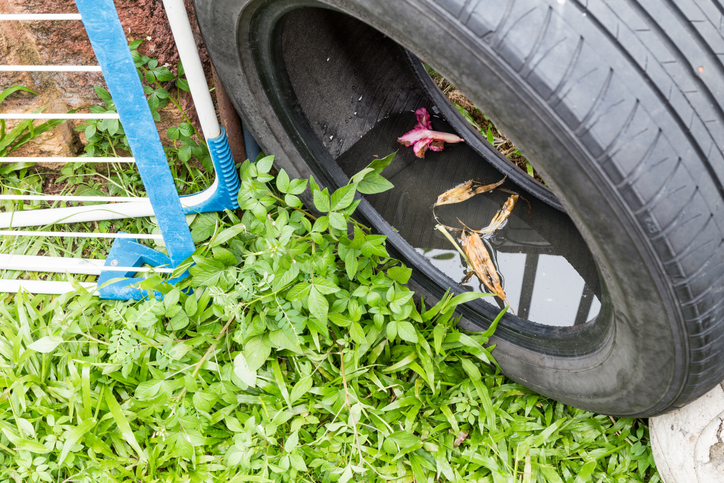May 2025 Treecologist Tribune
Seasonal Rhythms, Mysteries Afoot and Dang Skeeters
Every year, eastern phoebes nest in our carport. This year, even with the loss of a parent, the remaining bird has raised three babies, and they will fly off any day now. I feel like their hovering grandma, constantly checking on things! A few weeks ago, one night, the chattering chimney swifts dove down the chimney and alerted us that they had arrived again at the end of their migration.
It might seem like everything is happening everywhere, all at once, but every plant, every insect, and every bird is doing exactly what it needs to do now, responding to temperature and daylight cues coded deep within their DNA. There is a rhythm of life and a time for all things. Turn, turn, turn.

Weather Notes
Recently, it’s been raining. A lot! Rain is good, but the quality of the rain matters. Here’s a story about that: Over the last 100 years or so, the Piedmont has not experienced a consistent upward or downward trend in precipitation, although there have been periods of drought and others of high rainfall. What is new is that heavy rain events are becoming more common. This means we are receiving more of our rainfall in deluges, and due to the compacted condition of most of our suburban soils and the extensive area that is paved, much of the rain flows back into streams, carrying silt and debris. Often, not enough rain penetrates the soil where our trees require it. So, we can get plenty of rain, yet our trees might still experience drought.
In the last month, we’ve beaten the expected amount of rain by a fair bit, so that’s good. It came in about 8 events, which is always better than a couple of wicked storms, so that’s also good. Take a trowel and dig a couple of six-inch holes in your yard to find out how deep the rain soaked in. The amount will vary and will be influenced a lot by slope and soil compaction.
Rain Summary:
- 3.77” since 4/25 (historic average 2.16”)
- 14.4” Year-to-date (historic average 15.34”)
Something to Do NOW Before Hurricane Season
Hurricane season is just around the corner, and, although we’re in a sweet spot compared to those in the mountains or on the coast, extreme weather is always possible. Next month, we will delve into more detail about what makes trees strong, which is key to preparing your trees for serious weather events.
I’ll give you a hint, though. The three pillars of strong trees are structural pruning, improving soil health, and diligent care when performing work that could impact tree roots. You can also dig into this in detail right now by checking out chapters on pruning, root, and soil care in our free book “From Wasteland to Wonder.
Don’t wait until a storm with an ironically cute name is on the horizon, potentially bringing mayhem. Anyone in the industry who knows what they are doing won’t have time to help at that late hour. Call Leaf & Limb now to ensure your trees have the best odds of weathering whatever comes our way.
In 1973, Something Nearly Unthinkable Happened…
Democrats and Republicans came together — almost unanimously — to protect other species. The Endangered Species Act wasn’t just bipartisan; it was nearly universal. In a world built on human dominance, this was a radical act of humility. Think about it: for most of our history, humans have wiped out predators, big mammals, birds—anything that got in our way.
It’s only been within the last 70 years that we’ve even started talking seriously about protecting other life. That shift didn’t come easy. It was sparked by the voices of people like Aldo Leopold and Rachel Carson, who helped us see the natural world not as something to conquer but as something to care for. The Endangered Species Act marked a rare moment where we rose above politics and ego—where we chose compassion over control. It showed what we’re capable of when we remember that we’re part of something bigger. Now, that legacy is under threat. Let’s not go backward by undoing this incredible feat. Please sign this petition that opposes new rules that would undermine The Endangered Species Act.
Garden Sleuthing: Mystery Holes, Alien Tentacles, and Barking Up the Right Tree
Holes in the leaves caused by feeding insects can be concerning or not, depending on your tolerance and the extent of feeding. However, sometimes something else could be afoot. Look at these perfectly round holes in a young bladderpod shrub I’ve recently planted. Have you seen anything like this? It’s hard not to leap to the conclusion that some prankster with a hole punch is pulling your leg.

If you’re really lucky, you might spot the creator as she flies off with a small disc of leaf in her jaw. She is a leafcutter bee, and she uses these perfectly round pieces of leaf to line the nest cavities for the eggs she will lay. Check out this cool leafcutter bee video.
The good news about holes in leaves, in general, is that they usually reflect a healthy ecosystem at work. Insects need to eat leaves, and birds need to eat the caterpillars. In a healthy habitat, all of this works out just fine.
Another little mystery centers on this weird-looking orange, tentacle-covered ball of jelly. These odd growths show up on cedars in April and May, and thoughts of alien invaders have to cross your mind. But science is often more eye-popping than fiction, and we are looking at half of a very complex but perfectly natural phenomenon. It is the telial gall of a rust fungus. The other half of the story appears on crab apple or related trees, which is disappointing if it affects the fruit you were hoping to eat. Other than that, this is just one of those interesting strategies that life can develop on this fascinating planet. Get some popcorn and watch this short video about this strange but true relationship.

The Treecologists at Leaf & Limb enjoy a good garden mystery, too. Last month, our treecologists Matt and Hayden examined an oak from which a large number of bark flakes rained down from the canopy seemingly overnight, and the homeowner suspected squirrels had caused it. This isn’t something squirrels normally do, but he was correct. Hayden delved in and discovered that the caterpillar of a native moth hides beneath bark plates. If it’s a heavy enough infestation, the squirrels are like kids in a candy shop, tearing off bits of bark to gobble up the caterpillars. The good news is that this doesn’t significantly harm the oak. It’s just interesting.

If you discover holes, growths, fungi, weird bugs, or any other unusual phenomena on your trees or shrubs and are uncertain if it is something to worry about, send us a message.
Also, remember that diverse and healthy environments host birds and insects whose day jobs include eating other critters that might become pests if left unchallenged. Consider establishing a Thicket of native shrubs or a Piedmont Prairie to create these beneficial environments in your garden. We can assist with that as well.

Q & A: Outsmarting Mosquitoes
This time of year clients often ask about the best way to discourage mosquitoes and whether sprays are any good.
Sprays aren’t very effective. They might kill around 10% of the mosquitoes in your yard at the time. Consider also that sprays are likely to impact insects and possibly other life forms as well, including those that might have helped control mosquitoes.
Even if you eliminate all the mosquitoes in your yard, new ones will come. Mosquitoes are looking for food and breeding sites. Let’s look at each of these two aspects and how we can deter mosquitoes in a bit more detail.
Food is the top priority. Female mosquitoes need a “blood meal” to lay viable eggs, while the males only require nectar or plant fluids. She can locate us by sensing our heat, the chemicals on our skin, and the CO2 we exhale.
Clearly, unless we stay indoors, we won’t eliminate ourselves as a food source for mosquitoes. However, we can confuse their senses by applying a good mosquito repellent. That’s the only sure way. CO2 traps can be somewhat effective at drawing mosquitoes away, but not all species are strongly attracted to CO2.
What doesn’t work at all are “bug zappers,” because mosquitoes are not strongly attracted to light. You will only kill a multitude of beneficial insects, including moths, which provide important food sources for birds. Honestly, these devices are a menace. Please don’t use them.
The second thing she needs is a suitable place to lay her eggs. She looks for standing water, which could be a pond, a swamp, or even a water-filled tree hole. Our suburban yards provide plenty of enticing options as well, including gutters, bird baths, old tires, and abandoned toys—anything that holds a few inches of water. Avoid providing these. Replace the water in bird baths frequently.
Check out this cool clip of mosquito larvae (tumblers) living in a tree hollow.
One Last Thing: Go Outside
We are fortunate to have many public gardens and arboretums in the Triangle. Take the little ones to JC Raulston Arboretum this Saturday for Garden Storytime, or head out to the North Carolina Botanical Garden. This is one of my favorite places in the Triangle. I have my own little ritual strolls that take me past my favorite native plants so I can watch them change through the seasons, and I have at least one “aha moment” every time I visit. Wherever you stroll, be sure not to miss the pitcher plants!
Until next month, remember to sniff the blooms and listen to the birdsong.